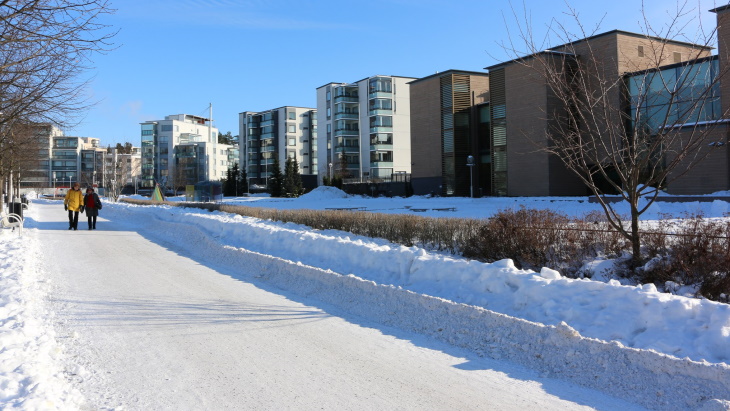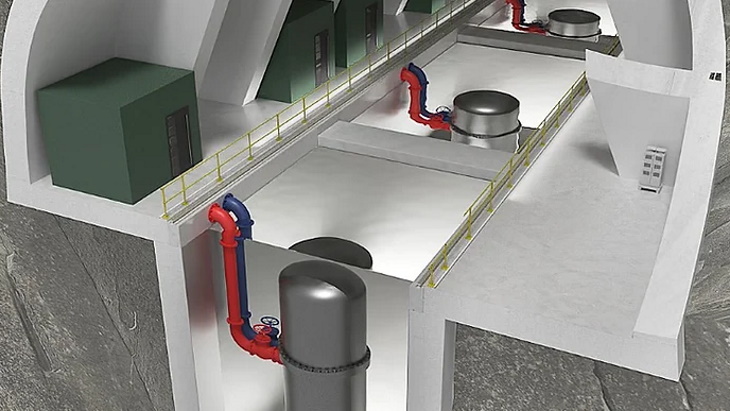Finnish small modular reactor developer Steady Energy has signed an agreement with municipal energy company Keravan Energia to develop nuclear-powered district heating.

Kerava Central Park in winter (Image: City of Kerava)
Kerava - in Finland's Uusimaa region and part of the Helsinki Metropolitan Area - becomes the third Finnish city to consider small modular reactors (SMRs) for heating purposes, following earlier initiatives in Kuopio and Helsinki.
The agreement marks the first step towards evaluating the feasibility of deploying SMR technology in Kerava. The next phase includes assessing site suitability, licensing, zoning, and the technical and economic viability of a nuclear heat plant tailored to Kerava's energy needs. Keravan Energia's territory has a large district heating network.
"We have a strategic goal to reach carbon neutrality by 2030," said Keravan Energia CEO Jussi Lehto. "To achieve this, we need to minimise our emissions affordably and ensure that our city's energy supply remains secure in all circumstances.
"You could say that district heating consists of a hot water pipeline to which radiators are connected and a huge kettle at the other end. Currently that kettle works on wood. An electrical resistance that works with green electricity is a good solution, but due to the instability of electricity prices and fluctuations in production, other stable solutions are also needed alongside it. Single-purpose nuclear power, such as Steady Energy's reactor, is a viable clean heating option for the region."
Should the project proceed to investment, construction of the SMR could begin as early as 2029, with district heating operations anticipated to start in 2032.

A multiple LDR-50 unit plant (Image: Steady Energy)
Steady Energy's LDR-50 district heating SMR - with a thermal output of 50 MW - has been under development at the VTT Technical Research Centre of Finland since 2020. Designed to operate at around 150°C and below 10 bar (145 psi), the company says its "operating conditions are less demanding compared with those of traditional reactors, simplifying the technical solutions needed to meet the high safety standards of the nuclear industry". Steady Energy anticipates an LDR-50 can be deployed within seven years, including licensing, at a cost of EUR100 million (USD109 million), making it affordable enough for municipal utilities to invest in independently.
"Heating water to 150 degrees accounts for 10% of global emissions," said Steady Energy CEO Tommi Nyman. "Our reactor focuses solely on this task, making it possibly the world's simplest commercial nuclear reactor. This design ensures that SMR-produced heat is cost-competitive compared to other alternatives."
He added: "The climate crisis won't abate until we heat our homes cleanly. Globally, over 80% of energy still comes from fossil sources, with nearly half of that going towards heating and cooling. Finnish energy companies are taking the lead in moving away from combustion-based energy altogether."
In December 2023, Steady Energy signed a letter of intent with municipal energy company Kuopion Energia in Eastern Finland that includes an option for the construction of up to five district heating reactors starting in 2030. That agreement followed a letter of intent signed in October between Steady Energy and Helsinki's energy company Helen for the construction of up to 10 SMRs for district heating.
Steady Energy will start building a pilot plant in Finland next year. It will ensure the facility's functionality and demonstrate the company's ability to implement a complex project with extensive supply chains. The only difference between the experimental plant and the real one is that the water is heated by electricity and not by nuclear fuel. Helsinki, Kuopio, Espoo and Lahti are candidates for the location of the facility.